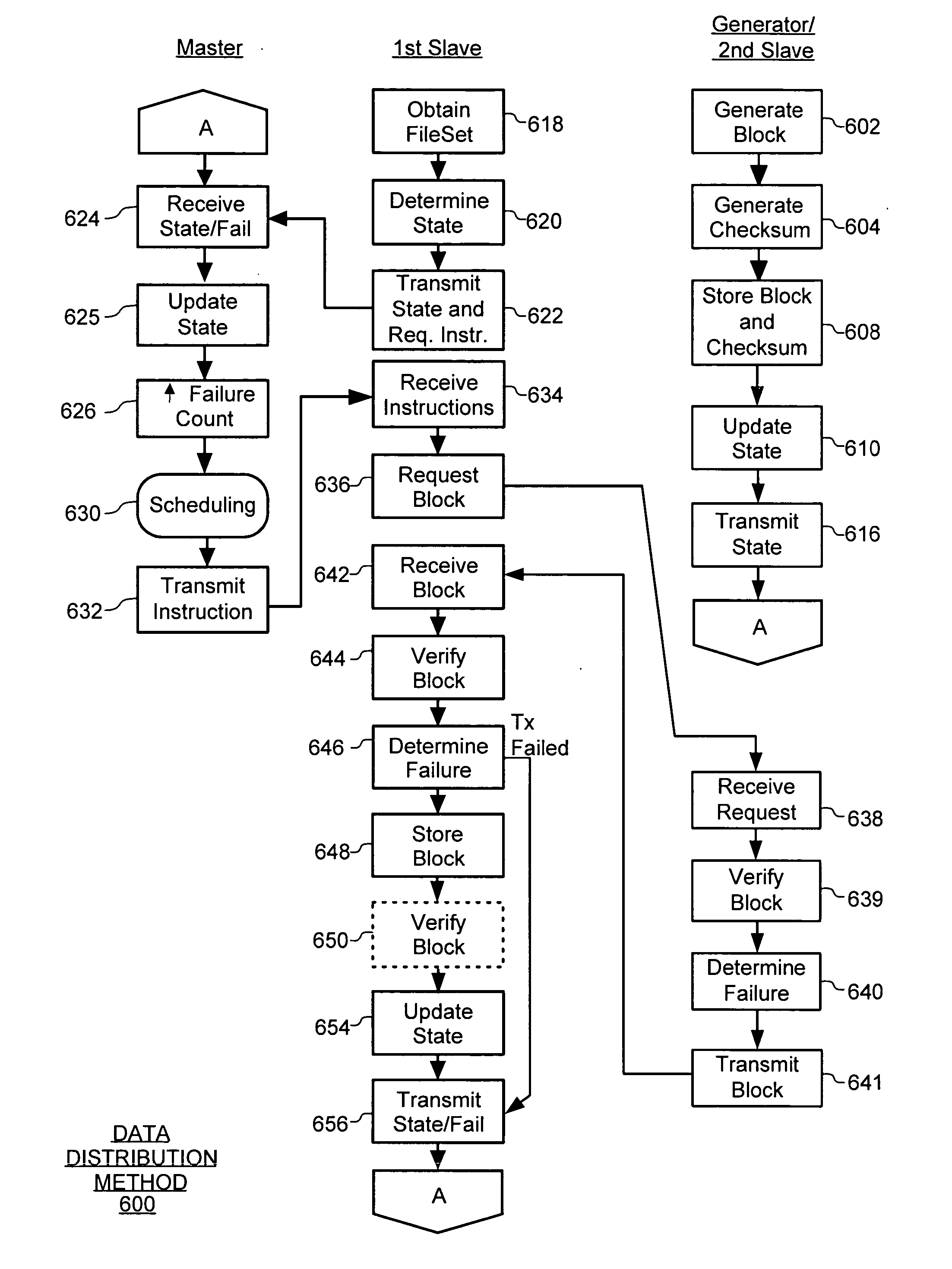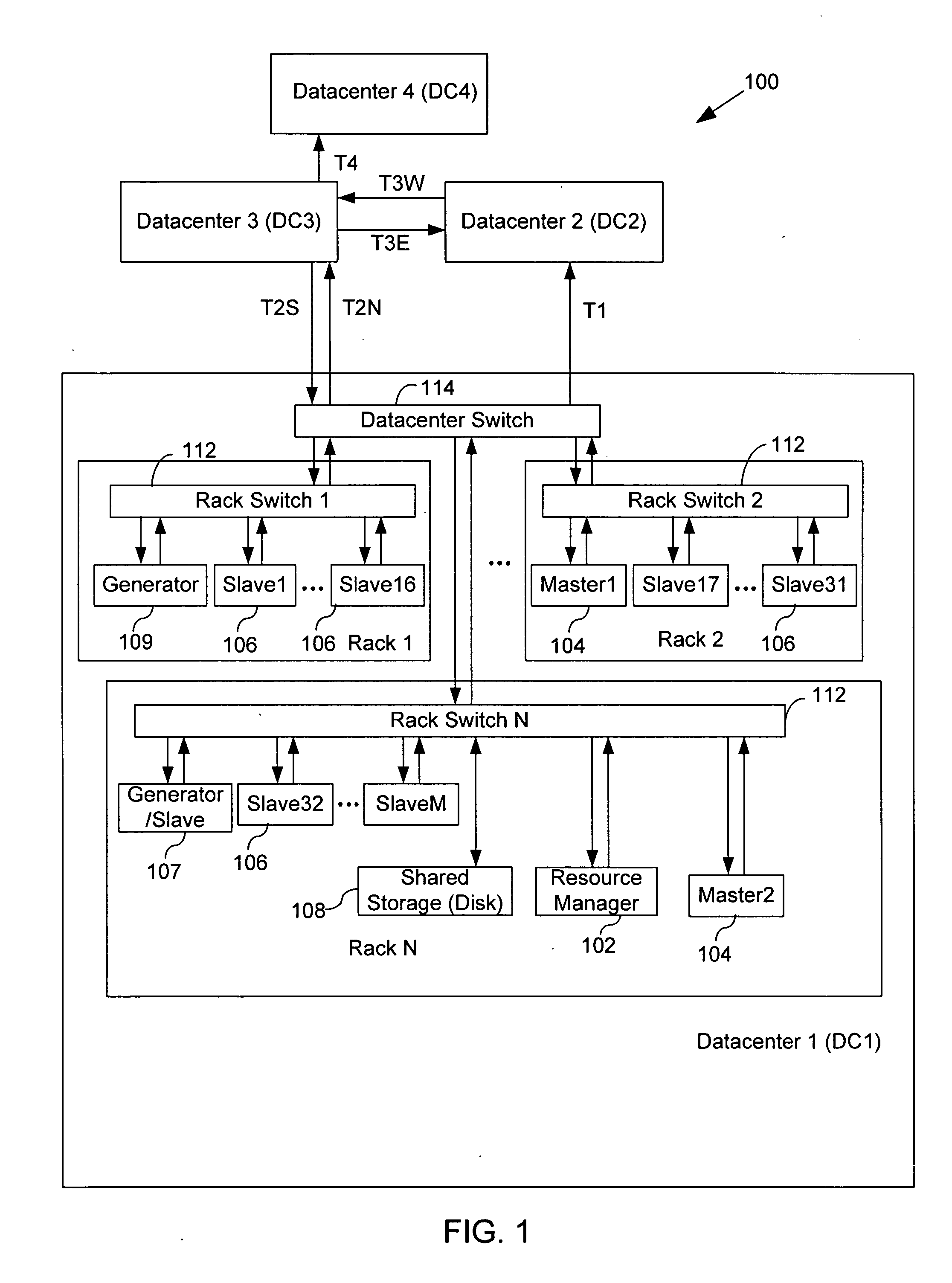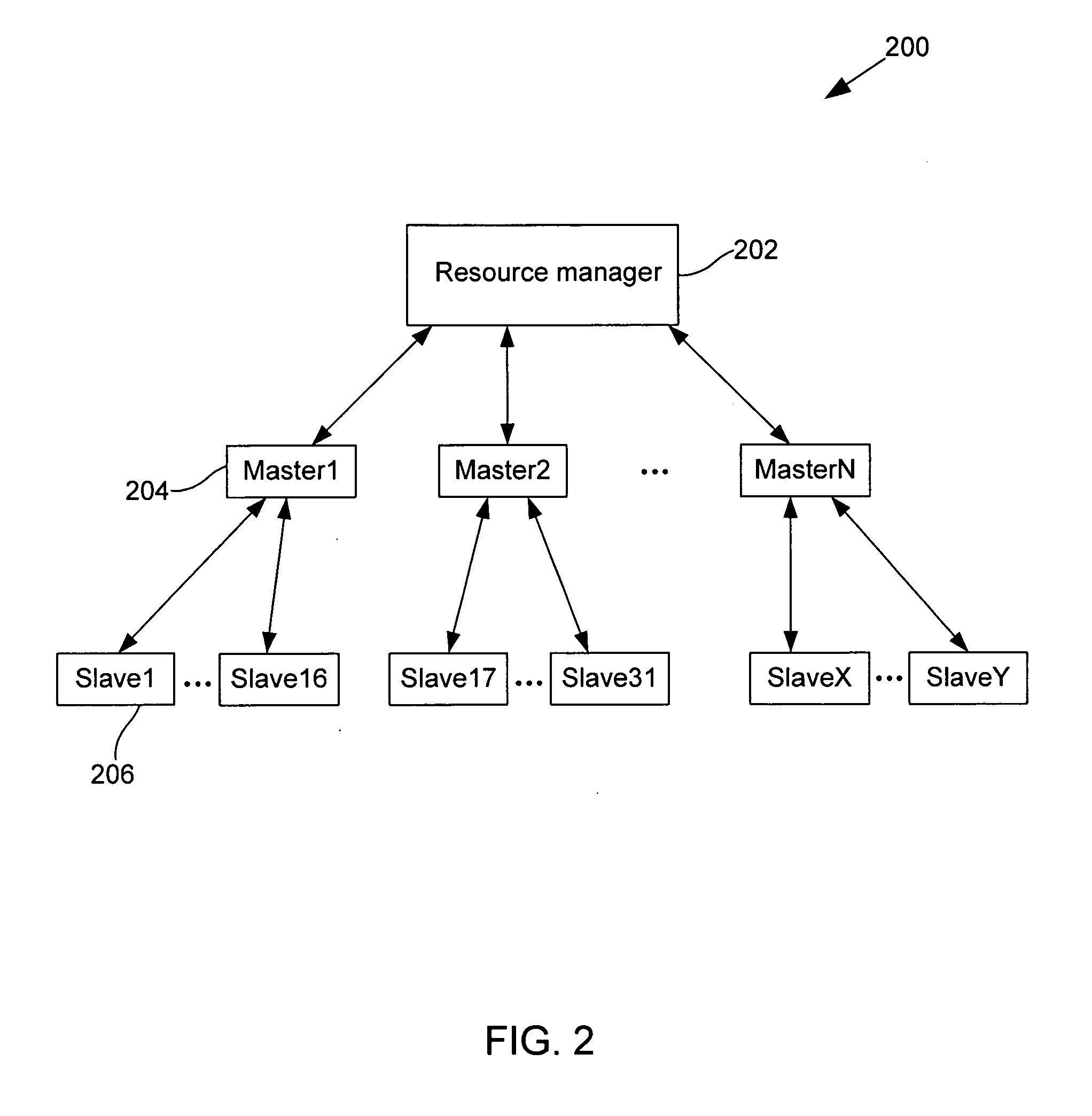System and method for scalable data distribution
a data distribution and data technology, applied in the field of data distribution, can solve the problems of inability to scale up the data distribution, and inability to efficiently respond to normal requests, etc., to achieve efficient copying operations, reduce the burden on any one master, and fast update time-sensitive files
- Summary
- Abstract
- Description
- Claims
- Application Information
AI Technical Summary
Benefits of technology
Problems solved by technology
Method used
Image
Examples
Embodiment Construction
[0034] A resource manager instructs multiple masters to schedule data copy operations between slaves. The data copy operations are optimized, such that for each copy operation the best available slave acts as a source slave for copying data to a destination slave. In general, the master is responsible for determining the possible source slaves that a destination slave can copy a file from and ranking those source slaves based on predefined criteria. When ranking possible source slaves, a master takes into account characteristics such as the size of the file at a source slave, the idleness of a source slave, and the network distance between the destination slave and the source slave. In some embodiments, file copy or transfer operations are scheduled over links that have sufficient resources to accommodate the file copy operation. This methodology ensures that each file copy operation uses the best source slave possible, while dynamically scheduling copy operations in accordance with...
PUM
| Property | Measurement | Unit |
|---|---|---|
| distance | aaaaa | aaaaa |
| time | aaaaa | aaaaa |
| distances | aaaaa | aaaaa |
Abstract
Description
Claims
Application Information
 Login to View More
Login to View More - R&D
- Intellectual Property
- Life Sciences
- Materials
- Tech Scout
- Unparalleled Data Quality
- Higher Quality Content
- 60% Fewer Hallucinations
Browse by: Latest US Patents, China's latest patents, Technical Efficacy Thesaurus, Application Domain, Technology Topic, Popular Technical Reports.
© 2025 PatSnap. All rights reserved.Legal|Privacy policy|Modern Slavery Act Transparency Statement|Sitemap|About US| Contact US: help@patsnap.com



